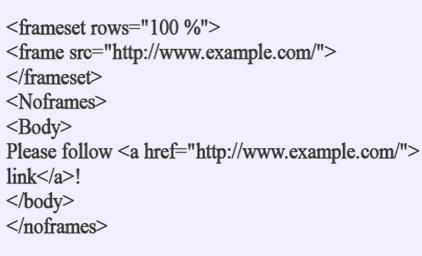Sneaky redirection pages are set up in groups of 10 or 20. They all target similar and related keywords or phrases. The only links on these pages are links to other pages in the same family creating a false sense of related linking.

URL redirection, also called URL forwarding, is a World Wide Web technique for making a web page available under more than one URL address. When a web browser attempts to open a URL that has been redirected, a page with a different URL is opened.
Similarly, domain redirection or domain forwarding is when all pages in a URL domain are redirected to a different domain, as when wikipedia.com and wikipedia.net are automatically redirected to wikipedia.org.
URL redirection is done for various reasons: for URL shortening; to prevent broken links when web pages are moved; to allow multiple domain names belonging to the same owner to refer to a single web site; to guide navigation into and out of a website; for privacy protection; and for hostile purposes such as phishing attacks or malware distribution.
But black hat SEO Sneaky Redirects do not contain content that any human would be interested in. These pages show up high in Search Engine Results Pages (SERPS). When you click on one of these pages from a search engine result, you will be redirected to another page. (Usually a high pressure sales page.)
Is this misleading? You bet. Why? Because the page you click on from the SERPs is not the page you actually get to read.
Key Point of Sneaky Redirects:
- The search engine provides something different to the user than the users expecting the real thing, that known as redirects is ‘sneaky’.
- Always send your user and search engine to the particular page and same place.
- Keep out the user to spam domain page while it shows the normal page to the desktop.
- You will get removed from Google by using ‘Sneaky redirects.’
The aim of Sneaky Redirects:
For guiding your visitor for correct information then it’s probably fine because if you are making redirecting.
- If you redirecting your user to old dog page to new dog page, then you are not being sneaky.
- If you redirect users from your old dog page to new cat page, then you are being sneaky.
- The reason behind sneaky is because someone who is on your dog page looking for same a dog page, not for a cat page.
Sneaky Redirects Methods
1.JavaScript redirects:
Traditionally search engines avoided crawling and indexing JavaScript. They did this to avoid any problem that would occur while crawling scripts. Search engines had problems crawling scripts especially where loops exist they get caught in infinite loop and they repeatedly attempt crawling pages which creates extreme load on the server and sometimes the server crashes. Because of this phenomenon they stopped crawling complicated Java or VB scripts.
Aggressive search engine optimizers took this to their advantage and create junk keyword stuffed pages and when someone clicks on the results from the search engine they get redirected to a good flash or nice looking html page with images.
To avoid this problem now almost all top search engines detect and crawl scripts and they penalize a site if they find a website doing redirect spam. It is rare to see such tactics being used today but still we can see it.
This is pretty simple, just include one of the following snippets:
window.location.assign("new target URL");
//or
window.location.replace("new target URL");
2. Mouseover redirects:
Similar to JavaScript we can write redirect on mouse over command on a page. When the mouse is moved over the page immediately the page redirects to a page meant for users from a page meant for search engines. Code is very simple but was useful for spammers

3. Meta refresh redirect:
This redirect is used to redirect to another page using Meta refresh tag. Here is a small sample code: Redirect to http://example.com/ immediately:
4. Frames redirect:
Redirect using frames was another way of redirection for the search engines. When a page is loaded with the following code

More redirects are applicable but I have listed the common ones here. Some redirects can be done directly on the server like the 301, 302 redirects and even they are at times abused by User-agent detection. Check for more redirects from the Wikipedia page: http://en.wikipedia.org/wiki/URL_redirection

Tagged: Meta refresh redirect, Mouseover redirect, search engine optimizer, Sneaky Redirect, Sneaky Redirects Method
Sneaky redirection pages are set up in groups of 10 or 20. They all target similar and related keywords or phrases. The only links on these pages are
[See the full post at: What is black hat SEO Sneaky Redirects ?]
What is black hat SEO Sneaky Redirects ?
Related posts:
Related posts: